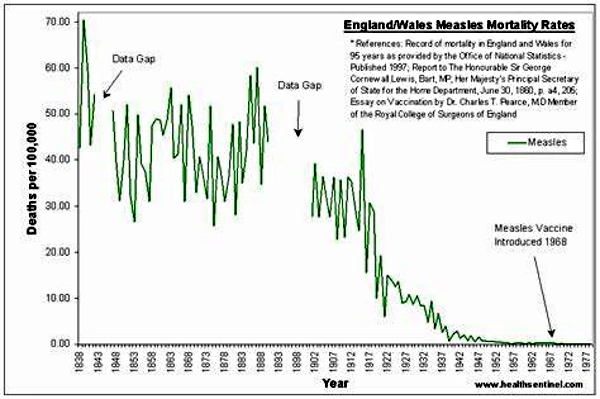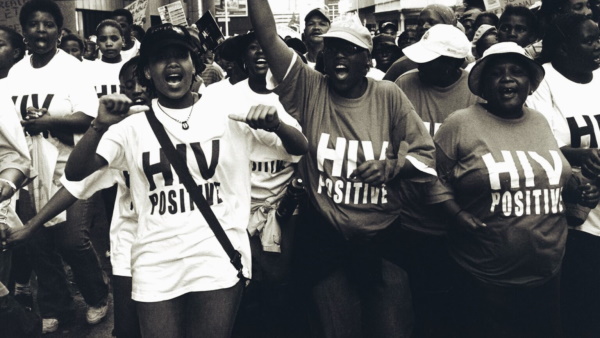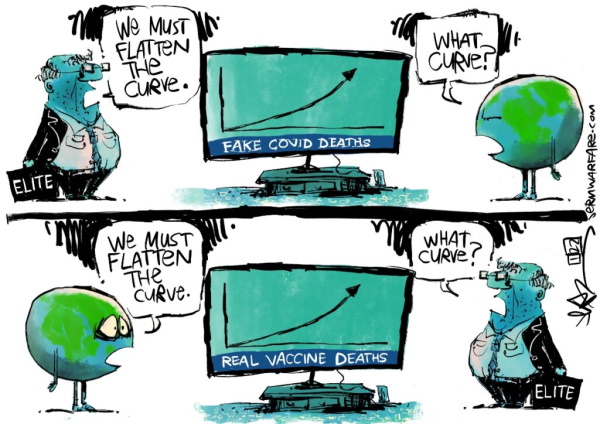by Jim West, Weston A. Price Foundation
originally published December 7, 2003
as found referenced at Medic Debate
On March 15, 2003 the World Health Organization (WHO) issued a global alert warning of a new virus spreading through Asia and causing Severe Acute Respiratory Syndrome (SARS), a potentially fatal disease, similar to pneumonia. Photos from China depicting ballet dancers and bridal parties wearing white masks appeared in western newspapers while health departments across the country issued notices to hospitals detailing the symptoms of the new virus and asking for immediate notification of suspect cases. Until the global alert, reports referred to an “unknown virus” first striking in Guangdong Province, China, although some reports place the origin in the Philippines. With the March 15 WHO report, the SARS virus became official and reports of new cases came flooding in.
By late May, officials had reported over 8,000 cases worldwide, with almost 700 deaths.1 Of the 65 suspected SARS victims in the US, all but a few had traveled by airplane to areas where the outbreak has been most severe, including mainland China, Hong Kong, Singapore, Hanoi and Toronto. The Chinese economy has taken a hit and some Chinese airline routes were virtually empty due to SARS fear.2
Serious Drama
The SARS outbreak has revived discussion of forced quarantine. According to a study by the American Public Health Laboratory Association and quoted by Senator Edward M. Kennedy, Democrat of Massachusetts, few cities have enough hospital space to quarantine patients in the event of a large-scale outbreak of an infectious disease like SARS. According to Lawrence O. Gostin, director of the Center for Law and the Public’s Health at Georgetown University’s Law Center, public health laws date back to the 19th century and are “wholly inadequate to deal with an emergency.”
“The need for public health law reform is urgent,” said Mr. Gostin. “It should have provisions for surveillance, vaccination, treatment, isolation and quarantine in a way that gives decisive powers to health authorities while respecting the Constitution.” So far, all but one of the SARS victims has submitted to voluntary isolation. The one exception, a New York man, was involuntarily contained until his symptoms passed. Federal quarantine law now includes SARS among its disease guidelines.
Mr. Gostin was the author of the draconian Emergency State Health Powers Act, which has been adopted (fortunately in softened form) by 22 states. According to Gostin, “The need for effective state compulsory power is beyond doubt. But that’s not a given in our country, which is now so tied to the rhetoric of individual rights. It seems we’ve lost the tradition of the common good.”3
Kill the Carrier
In China, a country where the “rhetoric of individual rights” is lacking, the government has announced it would kill SARS carriers who refused quarantine.4 Malaysian officials threatened imprisonment.5 In Hong Kong, officials motivated by the “tradition of common good” have suggested that “families of SARS patients be rounded up, and sent to quarantine camps.”6 In Nanjing, China, 10,000 have been quarantined, and in Beijing 16,000 as of May 6, 2003.7
Official Disease Definition
SARS means “Severe Acute Respiratory Syndrome.” This wide-open definition encompasses many diseases common in the affected regions. Symptoms range from flu-like to pneumonia.8 Dr. Frank Plummer, director of the National Microbiology Laboratory in Canada stated, “Of course, the case definition of SARS is a little loose.”9
The World Health Organization (WHO) has defined SARS in the following way: a) a person presenting after 1 November 2002 with history of high fever (greater than 100.4° F) and cough or breathing difficulty; or b) a person who was not autopsied but with acute respiratory disease and who has been in close contact within 10 days of someone who had SARS.10
This definition alone should give thoughtful readers cause to question the SARS phenomenon. Firstly, is a temperature of 1.8 degrees F over normal really a “high fever”? The CDC used “mild fever” in their case definition. Secondly, should WHO install a historical bias before the history of SARS is even written? WHO has made it impossible to place the discovery of SARS before November 2002, or even think of it as preceding that date, thus guaranteeing its status as an “emerging epidemic.”
In the US, the Centers for Disease Control (CDC) defines SARS differently: a) Illness of unknown aetiology [cause not already ascertained] and onset after February 1, 2003, AND, b) Temperature over 100.5 degrees F, AND, c) respiratory illness, AND, d) Recent contact with a SARS patient or travel to epidemic region.
This defines the new epidemic as an arrival from southeast Asia, China or Toronto. This definition obviates any need to test for the SARS virus in patients who contracted pneumonia before February 2003, AND, who had not traveled to the Orient or met such a traveler. With this definition, the diagnosis of any SARS-like case, determined previously to be of non-viral origin, would be secured from contradictions. The usual one-disease, one-cause theme for epidemics is thereby maintained.
SARS Virology
Due to the wide-ranging definition, the only unique quality of SARS is the associated virus. But association is not enough and a single association is not a rigorous, convincing proof.
On April 16, 2003, WHO announced that SARS virus, a member of the coronavirus family, was definitely causative for the disease. The report referred to a study carried out by a team led by Dr. Albert Osterhaus, the director of virology at Erasmus Medical Centre in Rotterdam. Media reports used the terms “unequivocal,” “definite,” and “beyond a doubt” to describe the work at Erasmus.
Osterhaus reported that his team infected one group of monkeys with SARS virus, a second group with the metapneumonvirus (also found in some SARS patients), and a third group with SARS virus and then the metapneumovirus. The monkeys infected with the metapneumonvirus alone developed mild symptoms, compared to the “full-blown disease” seen in the first group. The third group “did not develop a more serious version of SARS.” From this Osterhaus concluded, “the coronavirus alone is capable of causing the typical symptoms…”11
Virology in Doubt
Press releases about the “definitive” Erasmus study, distributed by AP, WHO, Nature Magazine and others, cannot be taken seriously without further details. Here are a few unanswered questions:
a) Since laboratory virus stocks are poisoned with antibiotics, or are derived by a process that utilizes poisons, then which poisons were present in Erasmus University virus stocks?
b) Were the toxicities of virus stocks included in the assessment of the study results?
c) How was the virus stock obtained?
d) Was a comprehensive test for other viruses performed on the experimental stock?
e) Are the laboratory-produced viruses chimeric viruses, that is, synthetic viruses?
f) What quantity of virus medium was applied to each monkey; that is, what multiple of real-world conditions?
g) What concentration of viruses were applied; that is, what multiple of real-world conditions?
h) How was the medium applied; would the application method be possible in real-world conditions?
i) Which chemicals were added to the medium in addition to antibiotics? Do these interact or promote the toxicity of other chemicals in the virus stock?
j) How many monkeys were in each group? Were there enough for a valid assessment?
k) What was the condition of each monkey prior, during and at the conclusion of the experiment? Monkeys have been regarded as poor experimental subjects because of their intelligent sensitivity, and maltreatment received from handlers and distributors. Stress alone, incurred by the monkeys due to cruelty, cage conditions and poor nutrition, can cause illness or susceptibility.
l) Was the virus used in the experiment actually “isolated”? The word, when used by virologists, means something entirely different from the meaning assumed by non-virologists (including doctors), and this word serves as the basis for misinformation regarding virus proof. The details of “isolation of the virus” need to be explained.
m) Were any of the experimental animals, or tests, rerun after unexpected results occurred? What were the circumstances?
At this writing, one further detail of the Erasmus study has been obtained, “Osterhaus and colleagues completed the final ones [Koch Postulates] when they infected two macaque monkeys with the virus from a SARS patient and isolated it from the animals.”12
So, the “definite” proof is based on two monkeys injected with the supposed SARS virus. What happened to independent confirmation, randomized controls, and probability analysis that determine the possibility that a test on two monkeys is valid? The hyped language, the major institutions and funding sources involved, juxtaposed against the meager number of monkeys in the experiment, point to extreme bias in the search for a microbial demon. I look forward to more details of the Erasmus study.
As of late May, tests for the virus in Toronto “failed to spot a targeted virus in 30% to 50% of infected patients.”13 This was attributed to inaccurate testing methods, not the absence of the virus. Nevertheless, no matter how often SARS virus is found, the virus is present only in trace amounts and not in quantities large enough to cause disease, leaving infection and pathology in doubt.14
Convenient Scapegoats
In spite of the nagging inconsistencies in the viral theory for SARS, scientists and the press have gone one step further with reports that SARS originated in a live meat market in China’s Guangdong province in November, 2002. Researchers in Hong Kong and Shenzhen, China found a virus that is “almost identical” to the human SARS coronavirus in six masked palm civets (cat-sized animals) and a raccoon dog sold in these open air markets,15 a convenient discovery that will bring official pressure on China’s traditional farmers and food-sellers, now in competition with new, “sanitary” western-style supermarkets.
Viral demons are fair game for the media. Dramatic realities merge with scenes from class B sci-fi movies, as doctors and nurses scream through hospital wards, airports are closed and police round up infected carriers. In China, such dreadful acts are all too real. In addition to the proposed human executions, millions of cats, dogs, farm animals and wildlife may be slaughtered to stop the deadly viral plague. Precedent is found in Britain’s Mad Cow and Hoof and Mouth epidemics, and supposed viral epidemics in Malaysia and Taiwan during 1997-1998. In this scenario, medical workers come to the rescue like soldiers, heroically primed to save lives with deadly force.
The pharmaceutical companies, of course, are playing a leading role. Roche, “the global leader in the $22-billion-a-year clinical-diagnostics market” is developing a test that should be able to “flag SARS in the first days of an infection, possibly even when the virus isn’t causing symptoms.” This will allow officials “to identify superspreaders (patients whose SARS infections are highly transmissible) before they become superspreaders,” says a Roche executive.16 As all diagnostic tests generate false positives, anyone suffering from a fever and a cough risks being branded as a modern Typhoid Mary should he or she submit to such a procedure.
SARS Critics
In spite of the fearful headlines, the SARS paradigm has met widespread criticism.
An insider, Dr. Frank Plummer, spilled the beans: “The director… told The Scientist yesterday (April 10) that the new coronavirus implicated as the cause of the disease is certainly around in the environment but is unlikely to be the causative agent. Frank Plummer is director of Canada’s National Microbiology Laboratory in Winnipeg.”17
Plummer stated, “we are finding some of the best-characterized [SARS disease] cases are negative [for the SARS virus]. So it’s puzzling. As is the fact the amounts of virus we are finding, when we find it, are very small–only detectable by very sensitive PCR.
“That’s what the majority of labs [nasopharyngeal swabs] around the world are testing, it’s where you find most respiratory viruses. It’s strange [that there’s so little virus there] because it seems to be transmitted by close contact.”
After the announcement of the Erasmus study, Plummer stated, “Once you conclude that this coronavirus is the sole cause of SARS then you move into a different phase and you move to test only for it. . . to the exclusion of other things. And I think. . . at least based on what we’re seeing in Canada. . . it’s a little early to do that. We are in many ways behaving as if this is the cause.”18
According to a CBC news report, “No classic respiratory or bacterial respiratory pathogen was consistently identified. Scientists have not definitively shown the new coronavirus causes SARS. To do that, they need to see the virus in infected lung samples from all patients and show the virus causes SARS in an animal model.”19 Implicit in this statement is the fact that SARS symptoms are not unique to the disease, or that tests were finding other (non-SARS) pathogens in the victims, or tests were not consistently performed for other pathogens.
Jon Rappoport, an independent journalist who has written for CBS Healthwatch, writes, “This [SARS] insanity is multiplied beyond all sense when you consider that, in Canada, they are now finding the [SARS] coronavirus in ZERO PERCENT of diagnosed SARS cases.”20
Nicholas Regush, veteran journalist of ABC News, admits no contact with Rappoport, yet writes, “We’re in very deep trouble… the COMING OF SARS. Having been a member of the reporting classes for many years, I can’t say that I’m surprised. More like disappointed. Disgusted. Outraged.”21
Fintan Dunne, who edits a website entitled www.SickOfDoctors.com, is also critical: “More of the hype machine and further global economic damage, over a spurious syndrome which is a drop in the disease ocean.”22
Dr. Donald Low, one of Canada’s leading infectious disease experts and a key member of the SARS containment team, described WHO’s policies for Toronto as “a bunch of bullshit” and “inappropriate.”23
According to Peter Duesberg, the well-known microbiologist at the University of California at Berkeley, the list of badly diagnosed, yet strongly hyped epidemics is lengthy: Ebola, Hepatitis C, AIDS, SMON, and others.24 According to the German virologist Stefan Lanka, the list of pseudo-epidemics is nearly endless.25
Toxicology
The orthodox SARS paradigm completely omits and avoids toxicology for good reason: SARS disease symptoms are identical to pesticide and air pollution disease symptoms. And these poisons correlate in time and place with SARS epidemics.
Only virology holds SARS together, and by including toxicology, the virus theory of SARS can be entirely rebutted.
Airline Pesticides
As the SARS syndrome “appears to be spreading via air travel, the CDC advised travelers to postpone any non-essential travel to affected areas, which include China, Hong Kong, the Philippines, Singapore, Thailand, and Vietnam, according to WHO.”26
What most travelers don’t realize is that airlines routinely apply pesticides to airplanes, especially those on Asian routes. Airlines call their pesticide application “disinsection.” A US Department of Transportation memo describes two methods of application: “Either spray the aircraft cabin, with an aerosolized insecticide, while passengers are on board or treat the aircraft’s interior surfaces with a residual insecticide.” 27
On August 2, 2001, CNN reported on a lawsuit filed by United Airlines stewardesses for damages caused by pesticides sprayed in United Airlines planes on Australian and New Zealand routes.28 No further mention of the lawsuit has appeared in the press.
However, on March 17, 2003, Pesticide Action Network Updates Service (PANUPS) announced: “An airline flight to the tropics may involve greater health risks. . . pesticides are routinely sprayed in aircraft cabins by US airlines, sometimes over the heads of passengers during flight.”29
Details on airline pesticide protocols for southeast Asian airline flights emerge from the US Department of Transportation memo: “Guam requires disinsection, but permits the residual method, of all flights from the Commonwealth of the Northern Mariana Islands, Thailand, Philippines, Korea, Indonesia, Malaysia, the Federated States of Micronesia, Papua New Guinea, Solomon Islands, and the Republic of the Marshall Islands and, during certain months, of flights from Taiwan, Korea and Japan.”30
The pesticides used in airlines are synthetic pyrethrin pesticides (pyrethroids), which in some countries have been banned from agricultural use.31 SARS symptoms are nearly identical to those of pyrethrin pesticides, as shown in the table on Page 19.
There are other chemical risks found in aircraft. Diana Fairechild, who worked decades for the airline industry and spent years litigating against that industry over issues related to pesticide protocols, describes the liabilities of airline travel on her website.46
Airport Pollution
Airports are notoriously air polluted. A single airliner at take-off emits tremendous volumes of pollutants.47 JFK airport in New York City, has its own oil refinery on the airport grounds, nearly two football fields in area. How common is that practice? Oil refinery emissions correlate exceedingly well with recent so-called viral disease epidemics. The West Nile virus epidemic was first noticed in the neighborhoods beneath one of the busiest take-off lanes in the US, La Guardia Airport, New York City.48
Industrial Emissions
The greatest SARS epidemic region in the world is the Guangdong province of China. That heavily populated province also vies for position as the most highly polluted region on earth, due to the presence of oil refineries, metal smelters and other chemical industries in a country with lower environmental standards.
Writing for The Atlantic Monthly, Mark Hertsgaard describes Guangdong province as “A fiendish laboratory experiment that was mushrooming beyond control. . . . Shanxi, a day’s journey west of Beijing. . . the land. . . scalped, the water poisoned, the air made toxic and dark. . . . At least five of the cities with the worst air pollution in the world are in China. Sixty to 90 percent of the rainfall in Guangdong. . . is acid rain. . . people’s lungs and nervous systems are bombarded by an extraordinary volume and variety of deadly poisons. One of every four deaths in China is caused by lung disease.”49 Hertsgaard found that total suspended particulates (an air pollution index) can be, in some cities in China, 12 times higher than in New York City. Obviously, non-viral forms of SARS exist in Guangdong. SARS is far from atypical.
Deforestation by fire can also cause the respiratory problems associated with SARS. Huge fires are set or occur accidentally in Singapore, Malaysia and China. Major fires ravaged southeast Asia in September 2002, just two months before officials announced the SARS epidemic.50
Tan Ee Lyn (Reuters) describes the air environment in Hong Kong and southern China, the major SARS epicenters: “[Title:] CHINA: September 9, 2002, Thick smog shrouds Hong Kong, health warning issued. [Text:]Hong Kong–Thick smog blanketed Hong Kong last week, a clear sign that the territory and southern China are still a long way from cleaning up their bad air. The government urged people with respiratory problems to avoid heavily congested traffic areas and cut back on outdoor physical activity.”
Toxicology = Virology
Even if a perfect (according to the rules of virology) laboratory proof for virus causation existed, such proofs still involve high use of artifice, far from the reality of everyday life. Even if SARS virology could have isolated and properly identified a real virus, questions still remain. A SARS virus may be a natural endogenous virus (from within) serving a normal adaptive function. It might not be the infectious, exogenous virus (from without) as described by media hype.
Not well known, but well established, is the fact that virus-like genetic material (RNA) is often expressed from poisoned cellular tissue as an adaptive and defensive response to poisoning.51 Expressing virus-like genes is part of the cellular “SOS response” of cells engaged in accelerated genetic recombination.52 The so-called SARS virus can be interpreted as such a genetic expression occurring in humans, as well as the exotic animals, palm civet cats and raccoon dogs sold in Guangdong live animal markets and recently found positive for SARS.
Virus Is Us
The cutting-edge biochemist, Howard Urnovitz, views SARS virus as human genes rearranged by pollution stress: “I do not see a virus. I see a unique and complete rearrangement of genomic elements. For example, when I look at what is believed to be the gene sequence coding for the spike protein of this coronavirus, I see a complicated gene rearrangement of a region of human chromosome. As I did in our studies of Gulf War Syndrome, when I see gene rearrangements like this, I immediately search for an associated catastrophic environmental event that could have caused such genomic rearrangement.”53 (Emphasis added.)
SARS epidemics correspond strongly with such “catastrophic environmental events.”
SARS Redefined
SARS is not a unique disease, since its symptoms coincide with pyrethrin poisoning and air pollution diseases.
Orthodox science damns itself by beginning with a virus hypothesis when toxicological evidence is plentiful. Orthodox journalism promotes the discovery of the “SARS virus” with little criticism of the virology and a deafening silence regarding toxicology.
Apparently the virus paradigm is a necessary cover for industrial pollution. WHO’s promotion of the virus disease paradigm is a tremendous boon for industry, which requires free disposal of industrial wastes into the lungs. . . correction. . . the atmosphere.
The preponderance of evidence indicates that SARS is the direct result of regional industrial pollution, airport pollution, with an optional coup de grace from pyrethroid pesticides applied directly upon the passengers or as a residue vapor. Essentially, airlines are enclosed, fabric-filled containers where air is circulated several times before it is vented to the outside. They are not the kind of chamber that environmentalists would prefer to enter following “disinsection.” SARS, like St. Louis virus (SLE), West Nile Virus (WNV) and non-toxicological asthma definitions guarantee spin control for emerging epidemics.
Neenyah Ostrom discusses the general relationship between pollution in China and the SARS virus– and the relation between poisoning and cellular RNA: “But Guangdong and Hong Kong share another distinction: They are in perhaps the most polluted area on the planet. Should we be asking questions like, what new types of pollutants have been introduced into this gene-swapping microenvironment? So, the question becomes: Is pollution a causative agent in SARS?”
If SARS disease is another semantic flag for industrial pollution, then SARS functions by punishing the economy of polluting regions without specifically placing blame on powerful industries. Military groups have long employed such a method–where the group is punished to correct individual behavior. Within industry, SARS will bring about a reassessment of economic priorities (industrial need versus human worth) without the complications of public blame games.
Sidebars
West Nile Virus
West Nile Virus (WNV) arrived in New York City in 1999 and soon grew into an “epidemic” characterized by a sea of contradictions.54 Medical press agencies proclaimed the “first arrival of the West Nile virus to the Western Hemisphere”55 but a more accurate description of the situation would be the “first testing of the West Nile virus in the Western Hemisphere.”
Mayor Giuliani personally announced the epidemic. He also announced the immediate commencement of a six-week pesticide spray campaign over the city, dispensed by helicopters. Meanwhile, the TV and newspaper headlines chanted, “The Deadly Virus.” The disease was at first attributed to the St. Louis encephalitis virus (SLE) but a few weeks later blame shifted to West Nile virus.
The United States Geological Survey (“USGS”) issued a press release one year later “confirming” the pathological effect of WNV on crows. This was hyped and widely distributed. Having read many other virological studies, I found the USGS results incredibly odd. The crows were injected intramuscularly with a virus extract and a few days later all met death. The filter used to separate the virus from tissue extract was nearly six times the diameter of the virus.56 Nearly all non-injected crows in the same cage also died. The success of the experiment was too convincing to be true, especially for a study that did not employ the common, harsh, intracranial injection method. The study outcome was also odd because WNV had been considered a mild virus and not especially dangerous to birds. The USGS laboratory ignored my repeated inquiries for the published details. After going through another scientist, who contacted the USGS, I received an emailed response from the USGS indicating low confidence for their study. The agency indicated their study would not be published or discussed and they expressed an intention to perform a better experiment in the future. I doubt they would want to take a chance on another such experiment.
SLE and WNV epidemics occur annually in air-polluted petrochemical regions (such as eastern New Jersey and St. Louis) during the warm spring and summer months, with an apex in July and August. The incidence correlates daily with air pollution brought to ground level by warm air and loss of convection efficiency for exhaust sources. SLE epidemics have a long history in the US (in petrochemical regions) and these epidemics don’t spread infectiously to other regions. The two great epicenters for WNV/SLE disease are the two great petrochemical industrial regions in the US–southern Louisiana and New Jersey.
During the summers of 1999 and 2000, air pollution levels reached record levels, correlating with the incidence of “West Nile virus” cases, both human and avian. The gasoline additive MTBE represents perhaps the greatest production volume for any industrial poison in the US, yet it has received little publicity. The public became aware of its dangers only when the EPA suggested that MTBE be phased out on July 27,1999. That date also represents the apex of the West Nile virus avian epidemic for 1999.63
Like so many widely dispensed industrial poisons, the physiological effects of MTBE have only become known through usage on the public. However, Dr. Peter Joseph correlated MTBE with neurological disease in his 1997 study, “Changes in Disease Rates Following the Introduction of Oxygenated Fuels.” Neurological symptoms also characterize West Nile virus disease. Avian mortality further distinguishes this “viral” disease. Yet, avian mortality is an early warning system for human air pollution disease, as evidenced by the traditional air assay test, the “miners’ canary.”
Legionnaires’ Disease
Another acute respiratory disease is Legionnaires’ disease, also characterized by sloppy science. The disease was claimed causative for 182 casualties and 29 deaths within a few days in 1976 at the bicentennial celebration of the American Legion at the Bellevue Stratford Hotel in Philadelphia.
After several months of study, CDC scientists announced the discovery of Legionella bacteriumas as the cause for Legionnaires’ disease. Virologists Peter Duesberg and Brian Ellison relate the story.57 “One month before the CDC isolated the bacterium, a US House of Representatives Investigative Committee held hearings excoriating the CDC for not having looked for toxic chemicals as a possible cause of the 1976 epidemic. Chairman John Murphy of New York sharply attacked the investigation because ‘The CDC, for example, did not have a toxicologist present in their initial team of investigators sent to deal with the epidemic. No apparent precautions were taken to deal with the possibility, however remote at the time, that something else might have been the cause.’”
According to Duesberg, “The evidence indicates Legionella is actually quite harmless. Since 1976, CDC and public health investigators have found the bacteria all over the country, in water cooling towers, condensers, shower heads, faucets, humidifiers, whirlpools, swimming pools and even hot-water tanks, assorted plumbing, mud, and lakes. The bacterium is so universal that between 20 percent and 30 percent of the American population has already been infected, yet virtually no one ever develops Legionnaires’ disease symptoms.” Calling the organism Aguanella–indicating it is simply water-borne–wouldn’t serve the CDC’s purpose. Quite by chance, the CDC’s interpretation happens to protect the chemical industry, which sells poisonous deodorants, pesticides, antibiotics, carpets, paints, pharmaceuticals, cosmetics and beverages to hotels–and airlines.
Two SARS Disease Paradigms:
Comparison of Symptoms
| Symptom |
As SARS Virus32-35 |
As Airline Pesticide Poisoning
(mostly Pyrethrin formulations)36-45 |
| Coughing |
Yes |
Yes |
| Malaise |
Yes |
Yes |
| Fever |
Yes |
Yes |
| Headaches |
Yes |
Yes |
| Nausea |
Yes |
Yes |
| Vomiting |
Yes |
Yes |
| Rash |
Yes |
Yes |
| Respiratory distress |
Yes |
Yes |
| Respiratory failure |
Yes |
Yes |
| Neurological dysfunction |
Yes |
Yes |
| Cardiac dysfunction |
Yes |
Yes |
| Irritability |
Yes |
Yes |
| Diarrhea |
Yes |
Yes |
| Pneumonia |
Yes |
Yes |
| Lung damage (as measles symptoms, see below) |
Yes |
Yes |
| Dyspnoea (breathing difficulty related to hypoxemia) |
Yes |
Yes |
| Hypoxemia (low oxygen level) |
Yes |
Yes |
| Proteinaceous pulmonary edema |
Yes |
Yes |
| Leukocyte inhibition |
Yes |
Yes |
| Increases sodium ion permeability in tissue |
Not Listed |
Yes |
| Affects nasal, windpipe and lung surfaces |
Yes |
Yes |
| Shock |
Not Listed |
Yes |
| Seizures |
Not listed |
Yes |
| Salivation |
Yes |
Yes |
| Neurological damage |
Yes |
Yes |
| Muscular stiffness |
Yes |
Not listed |
| Like measles (Syncytial lung) |
Yes |
Yes* |
| Like flu |
Yes |
Yes |
| Like common cold |
Yes |
Yes |
| Like mumps |
Yes |
Yes* |
*In terms of listed symptoms
SARS – Other Theories
Len Horowitz, PhD, author of Emerging Viruses: SARS is simply the flu, which kills 36,000 people annually in the US. Death comes to those whose immunity has been compromised by drugs and vaccines.58 The media has created great fear among the public by grossly overstating mortality rates and exaggerating the danger to healthy individuals.
Mae-Wan Ho, PhD, president of the London-based Institute of Science in Society: SARS is a highly infectious disease caused by a new bacterium of the Chlamydia family that was created accidentally through genetic engineering. Disease-causing viruses and bacteria and their genetic material are the predominant materials and tools of genetic engineering. The artificial constructs created by genetic engineering are designed to cross species barriers and to jump into genomes, creating the possibility of new, highly virulent micro-organisms.59
Marshall Smith, Editor, BroJon Gazette: The SARS virus, like all flu viruses, is a variant caused by the rural Chinese custom of raising flocks of geese side-by-side with herds of swine. If a pig is ill with a porcine flu and then eats droppings from an avian-virus-infected goose, the result is a new cross-species flu virus with the outer lining of a pig and the inner viral core of a goose. Whether or not this theory is correct, Smith’s advice is sound: Do not suppress a fever. Fever is the body’s way of preventing the invading virus from reproducing and spreading massively throughout the body. Unfortunately, most cold and flu medications reduce fever, setting the stage for massive viral proliferation. Unfortunately, the current definition of SARS may cause many people to take drugs to suppress fever, in order to avoid quarantine.
Linda Saif, professor of food animal health at Ohio State University: Coronavirus causes cough and pneumonia, so-called shipping fever, in animals packed together in cattle cars. The stresses of air travel–large numbers of people together in small spaces, being away from home, being close to other strangers, moving across time zones, rushing to catch flights–are conditions that make the coronavirus dangerous to humans as well.60 (Saif does not explain why airline travel, which has been a fact of life for millions of people for the last 40 years, has not caused SARS until recently.)
Richard Fisher, senior fellow at the Jamestown Foundation, a Washington-based think tank: “. . . there are compelling reasons. . . to at least ask whether there might be any linkage between SARS and China’s biological-warfare efforts.”61
Chandra Wickramasinghe, professor of applied mathematics and astronomy at Cardiff University: The SARS virus comes from outer space, hitched a ride on a comet and then drifted down to earth.62
References:
- Washington Post, May 24, 2003
- AP, May 15, 2003. “SARS has caused more damage to the global airline industry than the Sept. 11 attacks and the war in Iraq combined, the world’s airline association said Thursday.”
- NY Times 5/5/03
- “China has threatened to execute or jail for life anyone who breaks SARS quarantine orders and spreads the deadly virus intentionally.” Beijing (Reuters), May 15, 2003
- “Malaysia ordered a quarantine for 203 citizens, mostly low waged earners, who had visited a SARS-infected produce market in Singapore and warned that it would imprison those who would break the orders.” www.rediff.com/news/2003/apr/24sars1.htm
- “Devastating Epidemic In Hong Kong”, CBS NEWS, 4/15/03, www.cbsnews.com/stories/2003/04/15/eveningnews/main549528.shtml
- “10,000 quarantined in Nanjing, China”, CBC News, www.cbc.ca/stories/2003/05/06/sars_china030506
- Maggie Fox, “Scientists Identify Virus Behind Deadly SARS”, Reuters 4/10/2003
- Robert Walgate, “Cause of SARS disputed. Head of Canadian lab not convinced that coronavirus causes SARS,” www.biomedcentral.com/news/20030411/04
- W.H.O. case definitions for SARS: www.who.int/csr/sars/casedefinition/en
- “Rotterdam-led scientists confirm virus as cause of SARS”, Bio Aspects Newsletter, Vol 6, April 24, 2003, www.geneyous.nl/docs/BioASPects20030424.html#article-marktontwikkeling1
- “Tests Confirm Coronavirus Is Sars Source”, Patricia Reaney, May 15, 2003, NIH/Reuters, MedlinePlus
- Fortune Magazine, 5/26/03
- www.biomedcentral.com/news/20030411/04
- Washington Times, February 24, 2003
- Fortune Magazine, May 25, 2003
- Walgate 4/11/03, Ibid
- “Containment Controversy”, Global Sunday, 4/25/03, an interview by Troy Reeb with Dr. Frank Plummer, Global Sunday, www.canada.com/national/globalsunday
- “Scientists make small steps in identifying cause of SARS”, CBC NEWS, April 10, 2003, www.cbc.ca/stories/2003/04/10/sars_sci030410
- Jon Rappoport, “More SARS Madness”, 5/52003, www.nomorefakenews.com
- Nicholas Regush, www.redflagsweekly.com
- Fintan Dunne, www.sarstravel.com
- Helen Branswell, “Irate officials blast SARS warning”, Canadian Press, April 21, 2003 www.thestar.com
- Peter Duesberg, and Bryan Ellison, Inventing The AIDS Virus, 1996, p3-129
- Stefan Lanka’s work may be found on www.virusmyth.com
- Neenyah Ostrom, “Why is SARS Such a Mystery? Virus, Bacteria, Fungus, Parasite – Why Can’t Researchers ID the Bug?”, March 20, 2003, www.chronicillnet.org
- Aviation Policy, U.S. Dept. of Trans., http://ostpxweb.dot.gov/policy/safety/disin.htm
- “United Sued Over Pesticide In Planes”, August 2, 2001, CHICAGO, Illinois (AP) — Flight attendants are being sickened by exposure to pesticides that are sprayed on airplanes serving Australia and New Zealand, a lawsuit filed against United Airlines claims,” www.cnn.com/2001/TRAVEL/NEWS/08/02/unitedairlines.pesticides.ap/index.html
- “Airline Passengers Are Sprayed for Bugs”, March 17, 2003: “An airline flight to the tropics may involve greater health risks… pesticides are routinely sprayed in aircraft cabins by U.S. airlines sometimes over the heads of passengers during flight.” PANNA mentions Asian routes as specifically at risk for this procedure.
- “Aviation Policy”, U.S. Dept. of Trans., http://ostpxweb.dot.gov/policy/safety/
- Cynthia Olsen, “A Safe Alternative Treatment for Head Lice”, Alive Magazine, October 2000, “Pyrethrins have been banned from agricultural use as a pesticide.”
- CDC Case Definition for SARS (March 22, 2003): Measured temperature > 100.5F; cough; hypoxia; shortness of breath; pneumonia; acute respiratory distress.
- Gavin Joynt and Charles Gomersall, “Severe acute respiratory syndrome (SARS)”,
- Tamer Fouad, M.D., SARS Symptoms: “headache, muscular stiffness, loss of appetite, malaise, confusion, rash, and diarrhea. Early laboratory findings include low platelet and white blood cell counts. In some cases, those symptoms are followed by pneumonia in both lungs, sometimes requiring use of a respirator.” The Doctor’s Lounge.NET. http://thedoctorslounge.net/medlounge/articles/sars
- Maggie Fox, April 10, 2003 (Ibid). Early SARS symptoms: like flu, measles, mumps.
- Olsen, 2000, Ibid. Symptoms listed for permethrin (a type of synthetic pyrethrin used on airlines): “Side effects include vomiting, respiratory failure, pneumonia and asthma.”
- Becky Riley, “Flyers Beware: Pesticide Use on International and U.S. Domestic Aircraft and Flights”, Northwest Coaltion Against Pesticides (NCAMP), 1998, “… “in-flight spraying, Airosol Aircraft Insecticide, says that acute health hazards of exposure to the product include dizziness, skin irritation, and frostbite, and that overexposure due to inhalation may cause temporary central nervous system effects: dizziness, headache, confusion, stupor with the exclusion of oxygen and with grossly excessive overexposure. Additional warnings state that individuals with preexisting diseases of the cardiovascular system may have increased susceptibility to the toxicity of excessive exposures, and to heart irregularities (Airosol Company, 1992).”
- Ibid, “Two other U.S.-registered permethrin-containing products with labeled aircraft uses, but theoretically not for use in passenger cabins (though this is far from clear from reading the product labels), are Dragnet FT Termiticide/Insecticide and Flea Insecticide. According to information provided by the FMC Corporation, manufacturer of the above products, symptoms of overexposure to both of the products include hypersensitivity to touch and sound, tremors, and convulsions. Overexposure of animals via inhalation has also produced symptoms such as squinting eyes, irregular and rattling breathing, and ataxia (loss of muscular coordination). Inhalation of stoddard solvent vapors [present in both of the above products] may cause dizziness, disturbances in vision, drowsiness, respiratory irritation, and eye and skin and mucous membrane irritation (FMC, 1998; FMC, 1993).
- Ibid. Airline pesticides: “Organophosphates are efficiently absorbed by inhalation, ingestion, and skin penetration. Symptoms of acute exposure to organophosphates include: headache, nausea, dizziness and anxiety, followed by muscle twitching, weakness, tremor, incoordination, vomiting, abdominal cramps, diarrhea, tightness in the chest, and coughing. Severe organophosphate poisonings can lead to incontinence, paralysis, unconsciousness, convulsions, and life-threatening respiratory failure (US EPA, 1989).”
- Ibid. “Bendicarb: Highly toxic carbamate nerve poison (US EPA, 1989). Causes eye irritation. Exposure (poisoning) symptoms include tightness in chest, sweating, stomach pains, vomiting, and diarrhea (US EPA, 1979).”
- Ibid. Piperonyl butoxide (used on aircraft): “Classified by EPA as a possible human carcinogen (US EPA, 1998-3). In animal tests, causes liver tumors and lung damage, hemorrhages, and anemia (Takahashi, 1994).”
- “MSDS: Permethrin,” Universal Crop Protection Alliance LLC, “…moderate eye and skin irritation… Eye: There may be moderate stinging, tearing and redness… mild skin irritation… Disturbances in vision, drowsiness, respiratory irritation… High oral doses can result in damage to the liver and kidneys… Long term feeding studies in animals resulted in increased liver and kidney weights, induction of the liver microsomal drug metabolizing enzyme system, and histopathological changes in the lungs and liver.”
- Shirley A. Briggs and Rachel Carson Council, Inc., “Excerpts From Basic Guide To Pesticides”, Pyrethroid symptoms: “tremors; exaggerated startle response; hyperthermia [fever]”
- Lance C. Villers, MA, NREMTP, “Managing organophosphate exposures”, Texas Dept. of Health, EMS Management, OP Symptoms: “respiratory depression, bronchospasm, bronchial secretions, pulmonary edema, muscular weakness, resulting in hypoxemia.” www.tdh.state.tx.us/hcqs/ems/MJCEPesticideExp.htm
- INCHEM, “Pyrethrin”, Symptoms: “cough, wheeze, dyspnoea, bronchospasm or pulmonary oedema.”, Chemical Safety Information From Intergovernmental Organizations. www.inchem.org
- Diana Fairechild, Flyana.com
- “Airports create smog; a single 747 arriving and departing… produces as much smog as a car driven more that 5,600 miles, and as much NOx as a car driven almost 26,500 miles (source: Natural Resources Defense Council).” Queens College School of Earth and Environmental Science www.qc.edu/EES/ENSCI111/Air/air.html
- Jim West, “The Dangers of MTBE-Gasoline Additive: Its Connection to the West Nile Virus”, Townsend Letter For Doctors And Patients, July 2002, v228, p64-76.
- Mark Hertzgaard, “Our Real China Problem”, The Atlantic Monthly, November 1997.
- “South East Asia: Regular Fire and Weather Update”, March 2003.Sources: NASA/EO and OSEI/NOAA. http://www.fire.uni-freiburg.de/summit-2003/introduction.htm
- Ralph Scobey, M.D., “Is Human Poliomyelitis Caused By An Exogenous
Virus?”, Archive Of Pediatrics (April/May,1954) v71, p111. From Jim West’s
analysis of Scobey, www.geocities.com/harpub/scobexog.htm
- Mark Ptashne, A Genetic Switch (1992), p62. Cell Press and Blackwell Scientific Publications, 50 Church St., Cambridge, MA 02138
- “Dr. Urnovitz rejects the theory of a coronavirus as being the cause of SARS”, May 14, 2003. www.chronixbiomedical.com/Research/press_release3.html
- Jim West, “The Epidemiology Of Air Pollution”, www.geocities.com/noxot
- Eric Ammerman , Senior Public Health Sanitarian, Monroe County Department of Health. “Experts agree that WNV most likely arrived in the Western Hemisphere as some ‘accidental tourist’ aboard a ship or in an airplane.”
- David Crowe, “West Nile Virus — Does It Exist?”, 2001 www.mercola.com/2001/oct/3west_nile_virus.htm
- Peter Duesberg, 1996 ( Ibid), p56
- http://www.tetrahedron.org
- http://www.i-sis.org.uk/BioTerrorismAndSARS.php
- Reuters, May 20, 2003
- Wall Street Journal, May 23, 2003
- Ibid.
- “A panel appointed by the EPA is set to report on Tuesday that use of the much-debated ingredient M.T.B.E. . . should be ‘reduced substantially’. .. ” The New York Times, July 27, 1999.
This article appeared in Wise Traditions in Food, Farming and the Healing Arts, the quarterly magazine of the Weston A. Price Foundation, Summer 2003.
Connect with Weston A. Price Foundation
Cover image credit: SD-Pictures
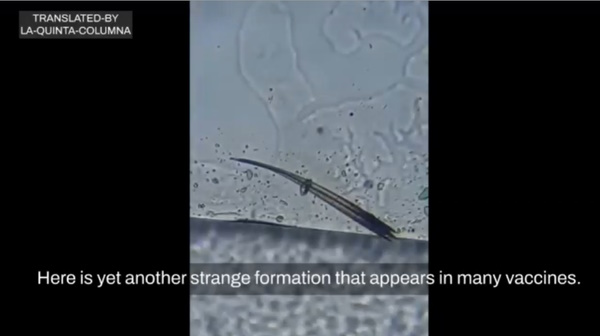

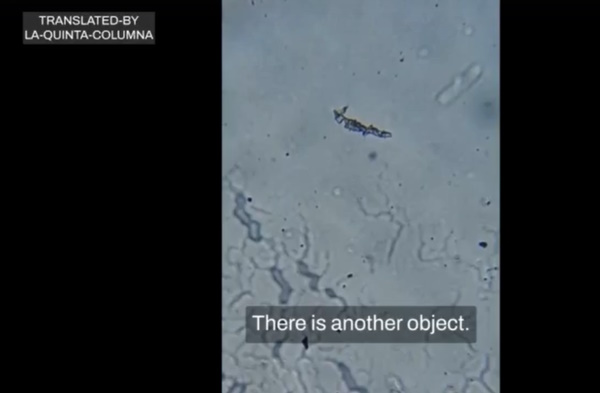

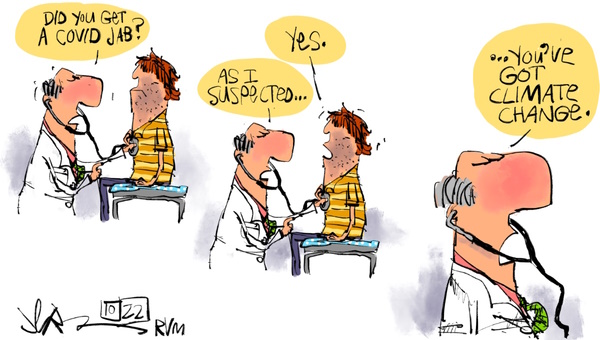

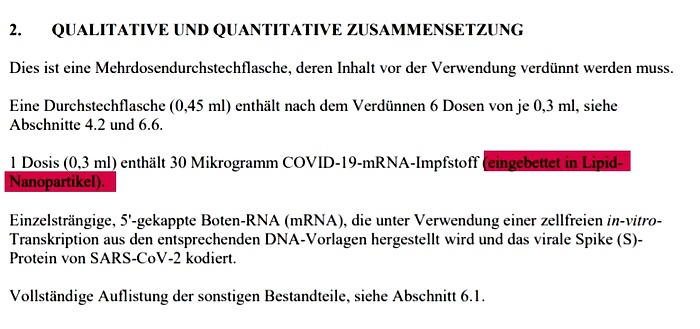
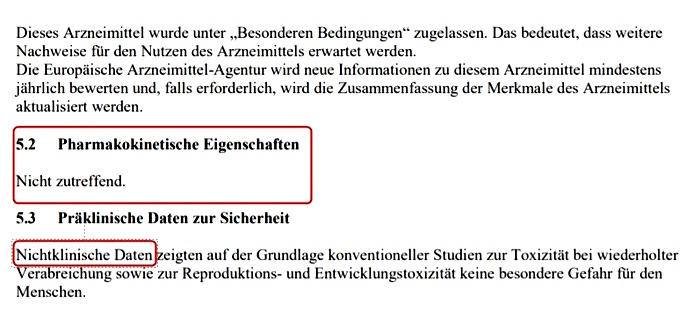
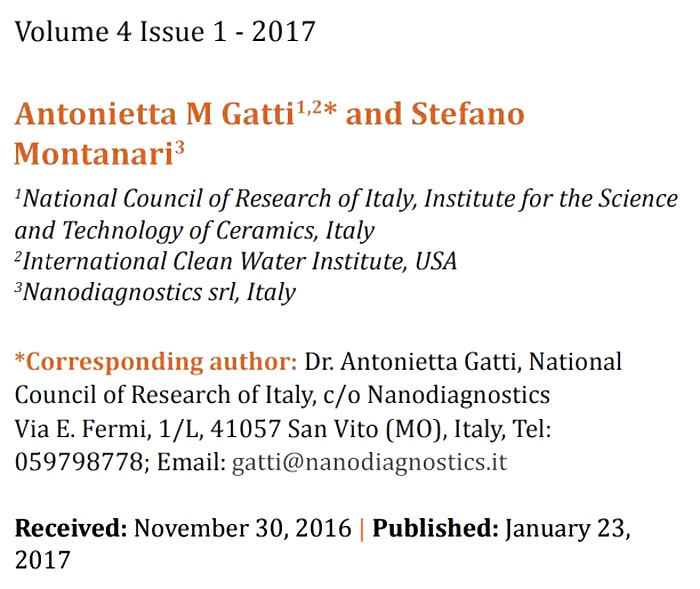


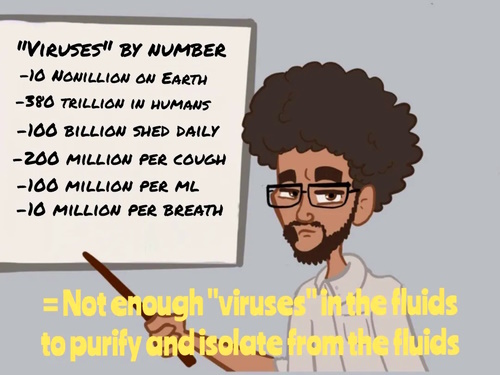





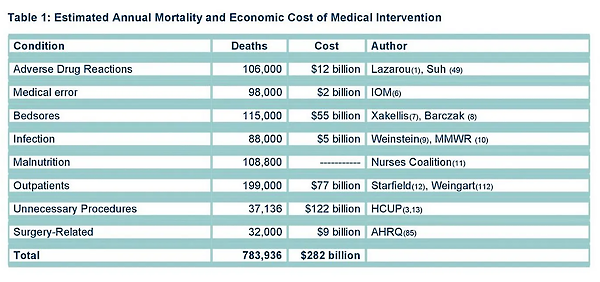



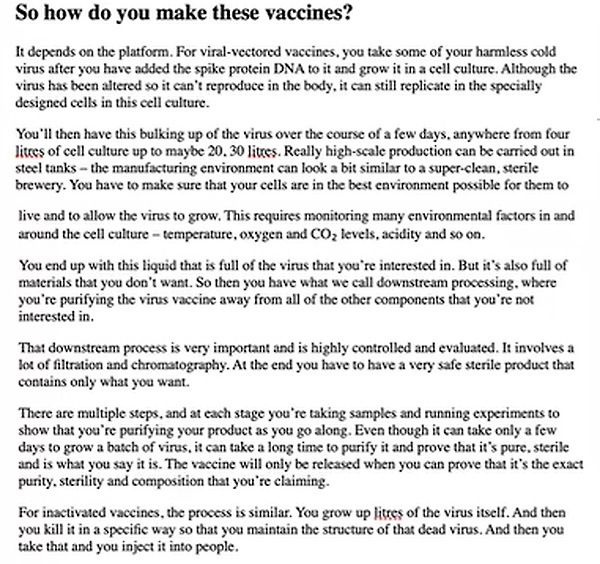




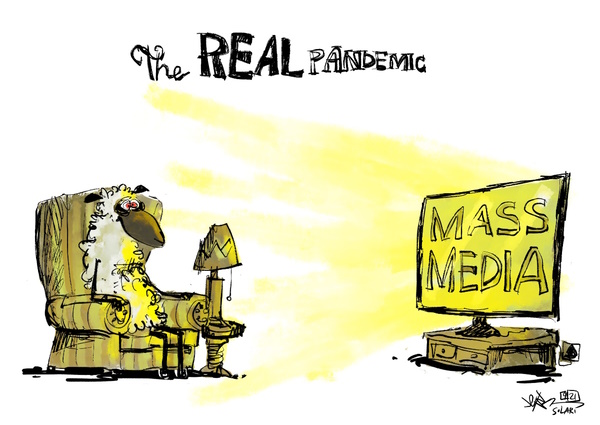 Dissolve the WHO
Dissolve the WHO